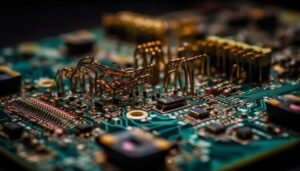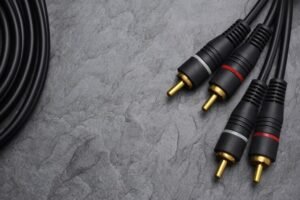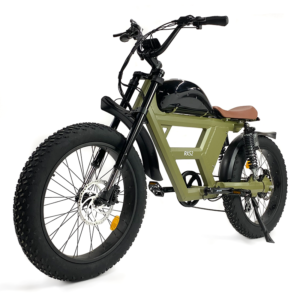In the landscape of modern industrial automation and robotics, the brushless DC (BLDC) servo motor has emerged as a crucial component, renowned for its precision, efficiency, and reliability. Paired with advanced motor controllers, these motors are transforming the capabilities of automated systems across various industries. This article explores the intricacies of brushless DC servo motors, their benefits, applications, and the pivotal role of motor controllers in optimizing their performance.
Understanding Brushless DC Servo Motors
A brushless DC servo motor is an advanced type of electric motor that operates without brushes, differentiating it from traditional brushed DC motors. This design eliminates common issues associated with brushes, such as wear and tear and electrical noise. BLDC servo motors are known for their high efficiency, precise control, and long lifespan, making them ideal for applications requiring accurate positioning and speed regulation.
How Brushless DC Servo Motors Work
- Motor Construction:
- Stator and Rotor: The motor consists of a stationary stator and a rotating rotor. The stator contains windings, while the rotor holds permanent magnets. Unlike brushed motors, there are no physical brushes to make contact with the rotor.
- Hall Effect Sensors: These sensors detect the rotor’s position, providing feedback to the motor controller, which adjusts the current in the stator windings accordingly.
- Commutation:
- Electronic Commutation: Instead of mechanical brushes, BLDC motors use electronic commutation managed by motor controllers. This involves switching the current direction in the windings in synchronization with the rotor position to maintain rotation.
- Precise Control: Electronic commutation allows for precise control of the motor’s speed and position, enhancing its performance in dynamic applications.
- Feedback Mechanisms:
- Sensors: Position feedback is typically provided by Hall effect sensors or encoders. These sensors inform the controller of the rotor’s exact position, enabling precise adjustments to the motor’s operation.
- Closed-Loop Control: The feedback mechanism allows for closed-loop control, where the motor controller continuously monitors the motor’s performance and makes real-time adjustments to maintain desired speed or position.
Key Features of Brushless DC Servo Motors
- High Efficiency:
- Energy Conversion: BLDC servo motors are highly efficient at converting electrical energy into mechanical motion, resulting in reduced energy consumption and lower operational costs.
- Reduced Heat Generation: The absence of brushes and friction leads to minimal heat generation, enhancing the motor’s efficiency and lifespan.
- Precise Position Control:
- Accurate Feedback: The integration of feedback mechanisms like Hall effect sensors or encoders allows for precise position control, making these motors ideal for applications requiring accurate movement and alignment.
- Dynamic Response: BLDC servo motors offer rapid acceleration and deceleration, essential for dynamic and responsive systems.
- Durability and Reliability:
- Brushless Design: Without brushes, these motors experience less wear and require less maintenance, leading to increased reliability and longer service life.
- Robust Construction: The solid construction of BLDC servo motors withstands demanding industrial environments, ensuring consistent performance.
- Quiet Operation:
- Minimal Noise: The absence of mechanical commutation results in quieter operation compared to brushed motors, which is beneficial in applications where noise reduction is important.
- Compact and Lightweight:
- High Power Density: BLDC servo motors offer a high power-to-weight ratio, allowing for compact designs that save space and reduce weight in applications like robotics and portable equipment.
The Role of Motor Controllers in BLDC Servo Motors
Motor controllers are essential in the operation of BLDC servo motors, providing the necessary electronic commutation and feedback integration to achieve precise control. Here’s how motor controllers optimize the performance of these motors:
- Electronic Commutation:
- Current Switching: Motor controllers manage the electronic commutation process by switching current through the stator windings in synchronization with the rotor’s position. This maintains smooth and continuous rotation.
- Efficiency Optimization: Advanced algorithms in motor controllers optimize the switching process, enhancing the overall efficiency and performance of the motor.
- Feedback Integration:
- Sensor Input: Motor controllers receive input from position sensors (e.g., Hall effect sensors, encoders) and use this data to adjust the motor’s operation. This feedback loop enables precise control of speed, position, and torque.
- Closed-Loop Control: Controllers facilitate closed-loop control systems, where real-time data from sensors is used to correct any deviations from the desired performance, ensuring accurate and reliable operation.
- Control Algorithms:
- PID Control: Motor controllers often use Proportional-Integral-Derivative (PID) algorithms to fine-tune the motor’s response to changes in load or speed, providing stable and responsive control.
- Advanced Features: Some motor controllers offer advanced features such as field-oriented control (FOC) or vector control, which further enhance the motor’s efficiency and dynamic performance.
- User Interface and Customization:
- Programmability: Modern motor controllers come with programmable interfaces, allowing users to customize control parameters, set operational limits, and configure the motor for specific applications.
- Diagnostic Tools: Built-in diagnostic tools help monitor the motor’s health and performance, providing valuable insights for maintenance and troubleshooting.
Applications of Brushless DC Servo Motors
Brushless DC servo motors are utilized in a wide range of applications where precision, efficiency, and reliability are paramount:
- Industrial Automation:
- Robotics: In robotics, BLDC servo motors provide the precision and dynamic response needed for robotic arms, autonomous vehicles, and industrial robots, enabling complex tasks and movements.
- CNC Machinery: Computer Numerical Control (CNC) machines use these motors for precise control of cutting tools and workpieces, enhancing manufacturing accuracy and efficiency.
- Aerospace and Defense:
- Drones and UAVs: BLDC servo motors are used in drones and unmanned aerial vehicles (UAVs) for their lightweight design, high efficiency, and precise control, crucial for stable flight and maneuverability.
- Aircraft Systems: In aircraft, these motors drive components such as control surfaces and actuators, ensuring reliable and precise operation.
- Medical Devices:
- Surgical Robots: In medical applications, BLDC servo motors enable precise movements in surgical robots, enhancing the accuracy and effectiveness of minimally invasive procedures.
- Diagnostic Equipment: These motors are also used in diagnostic machines like MRI scanners and CT scanners, where precise positioning is essential for accurate imaging.
- Consumer Electronics:
- Gimbals and Stabilizers: In cameras and handheld devices, BLDC servo motors provide stabilization and control, ensuring smooth and jitter-free operation in video recording and photography.
- Home Automation: In smart home systems, these motors drive automated mechanisms for blinds, curtains, and other home equipment, enhancing convenience and energy efficiency.
- Automotive Industry:
- Electric Vehicles: In electric vehicles (EVs), BLDC servo motors drive various components, including power steering systems, pumps, and actuators, contributing to overall vehicle efficiency and performance.
- Precision Systems: These motors are also used in precision systems such as adaptive lighting, automated seat adjustments, and climate control mechanisms.
Advantages of Using BLDC Servo Motors with Motor Controllers
- Enhanced Precision:
- Accurate Positioning: The combination of BLDC servo motors and motor controllers provides precise positioning, essential for applications requiring fine control and repeatability.
- Smooth Operation: Advanced control algorithms ensure smooth and stable motor operation, reducing vibrations and mechanical stress.
- Increased Efficiency:
- Optimal Performance: Motor controllers optimize the motor’s performance, reducing energy consumption and enhancing overall system efficiency.
- Heat Management: Efficient commutation and control reduce heat generation, contributing to longer motor life and reliable performance.
- Improved Reliability:
- Durable Design: The brushless design and robust construction of BLDC servo motors, combined with the protective features of motor controllers, result in a reliable and long-lasting solution.
- Maintenance Reduction: The elimination of brushes reduces maintenance requirements, lowering operational costs and minimizing downtime.
- Flexibility and Scalability:
- Customizable Control: Motor controllers offer customizable control settings, allowing for easy adaptation to different applications and operational requirements.
- Scalable Solutions: The modular design of BLDC servo motors and controllers enables scalable solutions, from small precision tasks to large industrial applications.
Conclusion
Brushless DC servo motors, integrated with advanced motor controllers, represent a significant advancement in precision motor technology. Their ability to deliver high efficiency, precise control, and reliable performance makes them indispensable in a wide range of applications, from industrial automation and robotics to aerospace and consumer electronics. As automation equipment continues to evolve, the combination of BLDC servo motors and sophisticated motor controllers will play a crucial role in driving innovation, enhancing productivity, and achieving new levels of efficiency and precision in automated systems.








+ There are no comments
Add yours